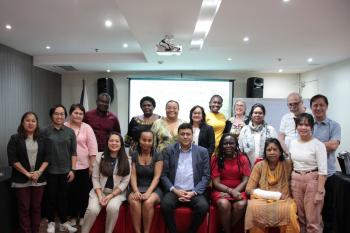UN-Habitat makes progress in measuring tenure security
A resident holds up her house number card in Mbale, Uganda, 2012. Photo: UN-Habitat/ Solomon Njogu
UN-Habitat and its partners have made considerable progress in developing a methodology consistent across countries and regions to measure security of tenure. This development follows the UN-Habitat Governing Council resolution in April 2011 to put in place global and national strategies and frameworks extending beyond this objective. However, while this year's Report on the Millennium Development Goals (MDGs) celebrates meeting targets on poverty, slums and water three years ahead of 2015, constituents on security of tenure were not factored in. According to the report, lack of globally comparable data on this indicator selected at the onset of MDG monitoring meant that the component could not be utilised in estimates produced to date. People or households are considered to have secure tenure when there is evidence of documentation that can be used as proof of secure tenure status; or when there is either de facto or perceived protection against forced evictions. Observations using the methodology are currently being implemented in 25 cities around the world through Urban Inequities Surveys.


